Ipswich Tramways
History
Ipswich's 3ft 6ins-gauge horse tramway, which was promoted and constructed by a London syndicate, unfortunately bankrupted them before it could be opened. As a result, it was sold off at auction, the successful bidder being a Mr Simon Armstrong Graham of Manchester, about whom very little is known, especially why he was interested in acquiring a tramway so far from his home base. Whatever his reasons, the tramway was subsequently set in order, opening for business on the 13th October 1880.
The initial line was only around 0.75 miles long, but powers were subsequently acquired (in 1880, 1881 and 1884) to extend the system, taking it to its final size of 4.25 miles. The system was essentially triangular in form with lines leading to the three termini from each apex. The southern terminus served the Great Eastern Railway's Ipswich Station, the tramway running northeastwards from there along Princes St to Cornhill, with a line branching off northwards along Portman Rd and Mill St to Barrack Square, these forming the eastern and western sides of the triangle respectively. Barrack Square and Cornhill were connected via a line running southeastwards along St Matthews St and Westgate St, which formed the northern side of the triangle. From the northwestern and northeastern apices at Barrack Square and Cornhill, respectively, lines ran northwestwards to Brooks Hall and eastwards along St Helens St, Spring Rd and St Johns Rd to Derby Rd Station, which by the time the tramway was built, was also under the control of the GER.
The Ipswich Tramway Act of 1881 also included powers to incorporate a new company — the Ipswich Tramway Company — to take over and operate the tramway, S A Graham selling his interest to the new company at this time.
The tramway appears to have been relatively successful for the first 15 years or so of its life, the only incident of note being a temporary, 2-week cessation of services in November 1893 following a dispute between the company and Ipswich Corporation over road maintenance. The ITCo's relatively untroubled existence was however soon to become a distant memory, the company struggling to make the tramway pay as the decade wore on. Unfortunately, things took a dramatic turn for the worse on the 20th June 1898, when the Ipswich Omnibus Company commenced horse-drawn bus services in the town, some in direct competition with the tramway and others to new destinations. The company fought back by reducing fares, but this, and the fact that the buses operated on Sunday, which the tramway did not, inevitably led to a loss of passengers, the ITCo's finances being significantly impacted.
The company was in no position financially to electrify the tramway, so it opted for the next best thing, which was to sell up to a larger company with available capital or to the corporation. There was however little interest in the tramway, other than from Ipswich Corporation, who in 1899 decided that it would build and operate its own municipal electric tramway system, powers to that end being obtained the following year. Meanwhile, the corporation opened negotiations with the ITCo to purchase the horse tramway, but despite the ITCo's parlous situation, a price could not be agreed. The corporation eventually resorted to a compulsory purchase order, with the price set by arbitration, all of which needless to say, took time.
The corporation eventually took possession of the tramway on the 1st November 1901, operating it for 16 months before closing it for reconstruction — and no doubt also to put a stop the losses its operation was incurring — the last horse tram running on the 6th June 1903.
Uniforms
In common with many horse tramways in the UK, drivers and conductors wore informal attire, namely: trousers, overcoats, jackets, waistcoats, shirts and ties. Headgear appears to have largely followed the fashion of the day, predominantly the bowler hat, and later on the flat cap. Although no badges were worn on either the jackets or the hats, a round licence was carried by both conductors and drivers, affixed to either their jackets or the cash-bag strap in the case of conductors.
Photographs of inspectors are so far yet to come to light, but given the small size of the tramway, it is entirely possible that the company never employed them.
Further reading
For a pictorial history of Ipswich's tramways, see: 'Ipswich Tramways' by Colin Barker; The Middleton Press (2009).
Images
Drivers and conductors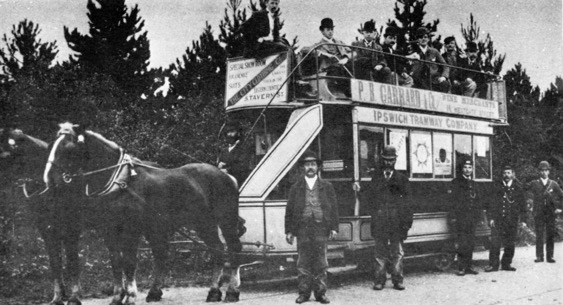
Ipswich Tramway Company Horsecar No 3 outside Derby Road Station — photo undated, but probably taken in the late 1880s given that the tram looks to be in good condition. The driver is wearing a bowler hat and plain jacket. Photo courtesy of the Tramways and Light Railway Society, with thanks to David Voice.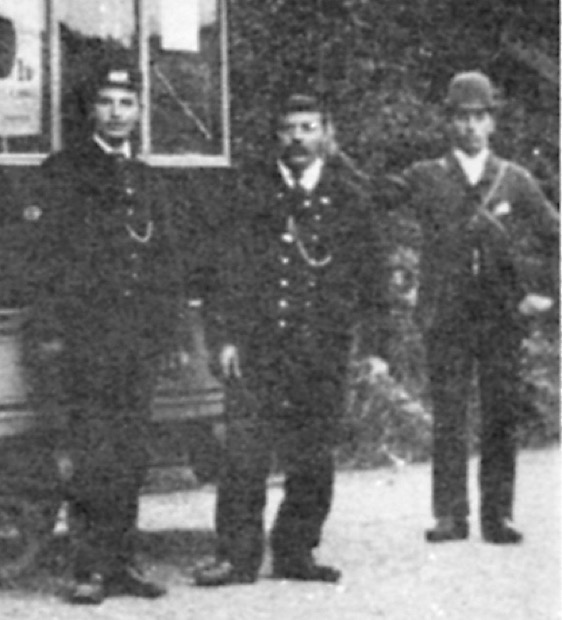
A blow up of the above photo showing the conductor (right), who is in informal attire, in contrast to the two uniformed figures to his right, who are almost certainly employees of the Great Eastern Railway company. The man on the left appears to be wearing an armband, signifying that he is probably a 'porter' or 'out porter'.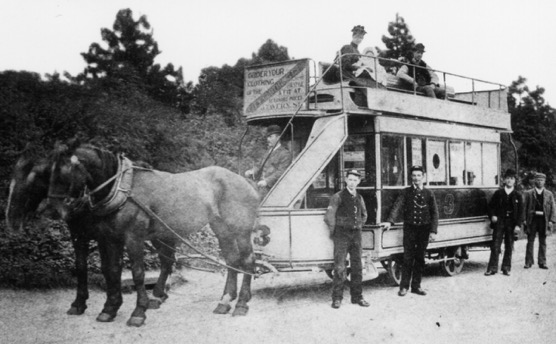
Another view of Horsecar No 3 outside Derby Road Station, this time looking a little less shiny, so possibly taken a few years after the previous shot. Photo courtesy of the Tramways and Light Railway Society, with thanks to David Voice.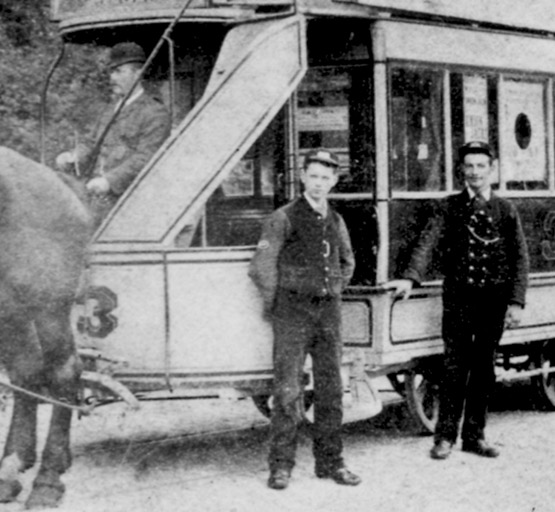
A blow-up of the above photo showing the driver, again in informal attire, and whose jacket appears to bear a round licence. The two uniformed figures are almost certainly railway employees.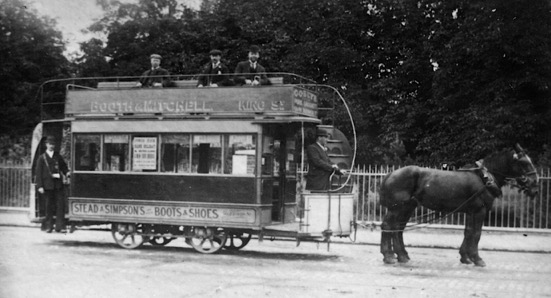
One last view of Tramcar No 3 — photo undated, but possibly taken in the late 1890s, though given the absence of the company title above the windows, it may in fact be later. Both the driver and conductor are wearing informal attire, with the latter also having a round licence. Photo courtesy of the Tramways and Light Railway Society, with thanks to David Voice.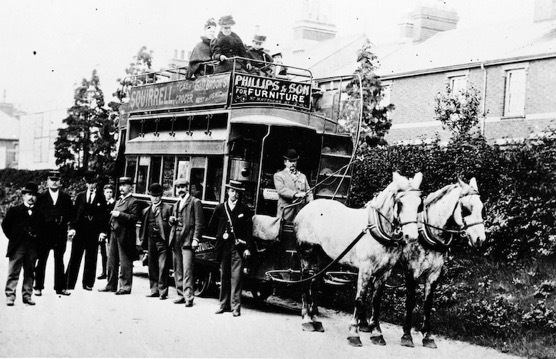
An unidentified horsecar outside Derby Road Station — photo undated, however, the straw boaters would suggest that it is turn of the century. The uniformed figure second from the left is almost certainly a Great Eastern Railway employee. Photograph courtesy of the National Tramway Museum. 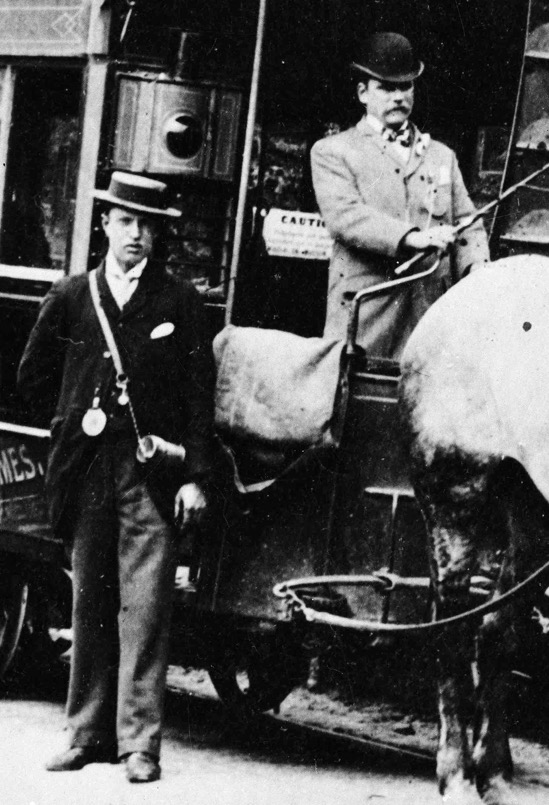
A blow up of the above photo showing the conductor (with round licence) and driver, both of whom are wearing informal but smart attire. The driver is also wearing a licence (on his left breast).